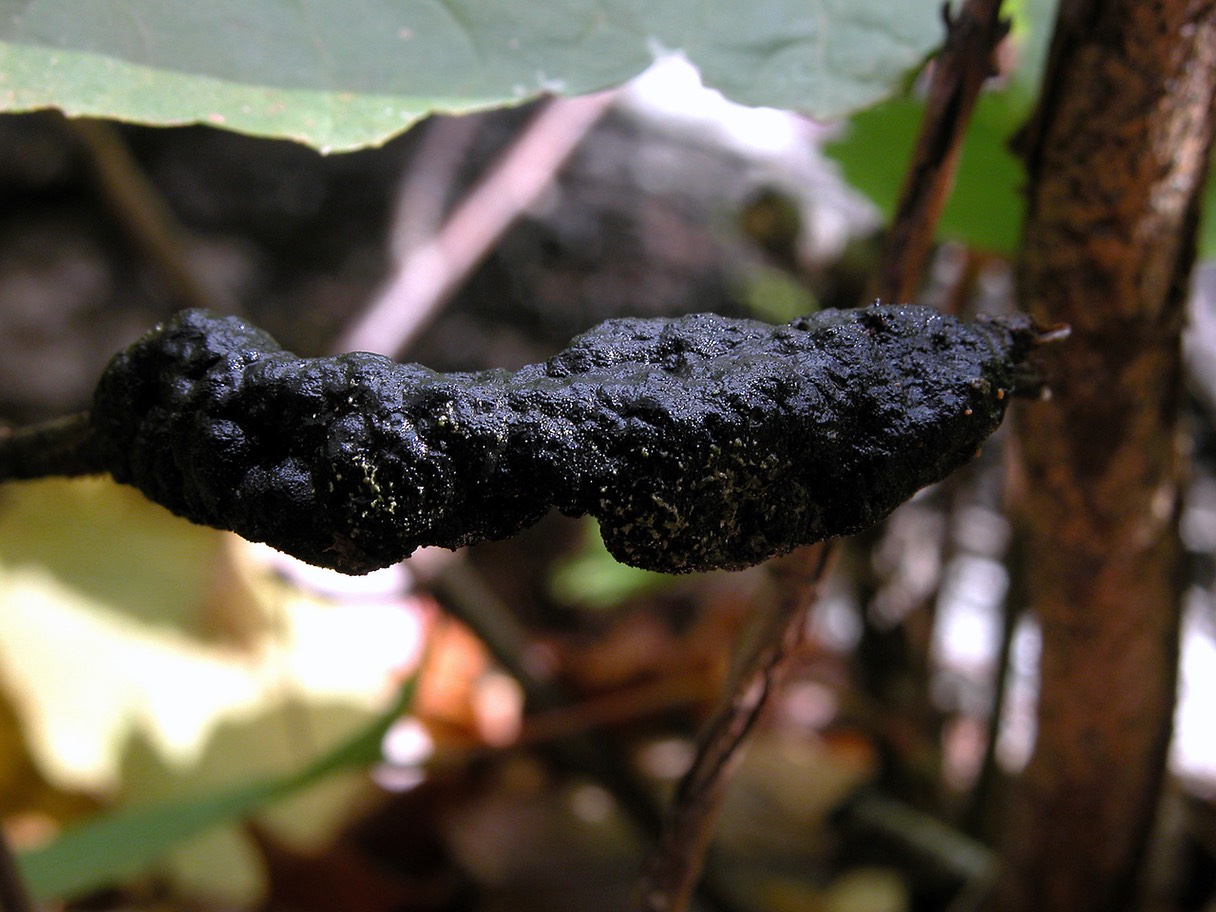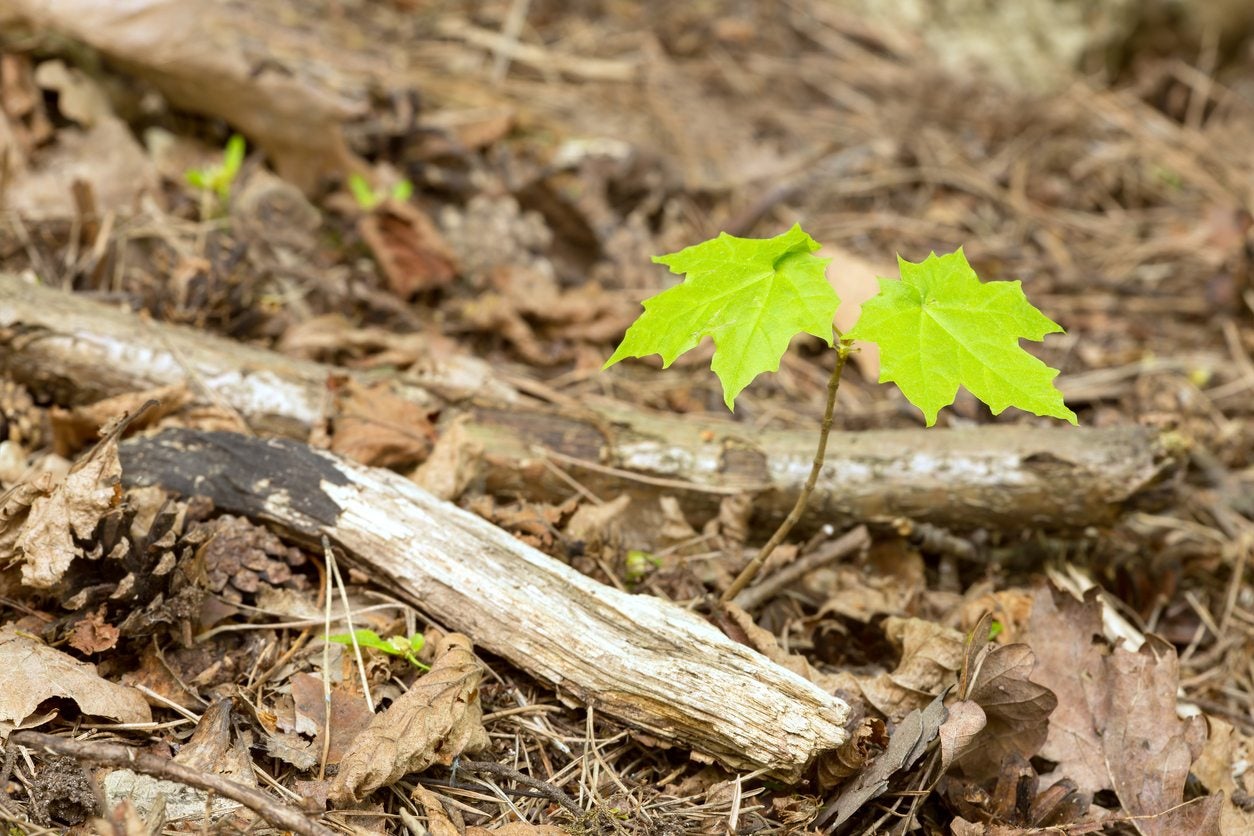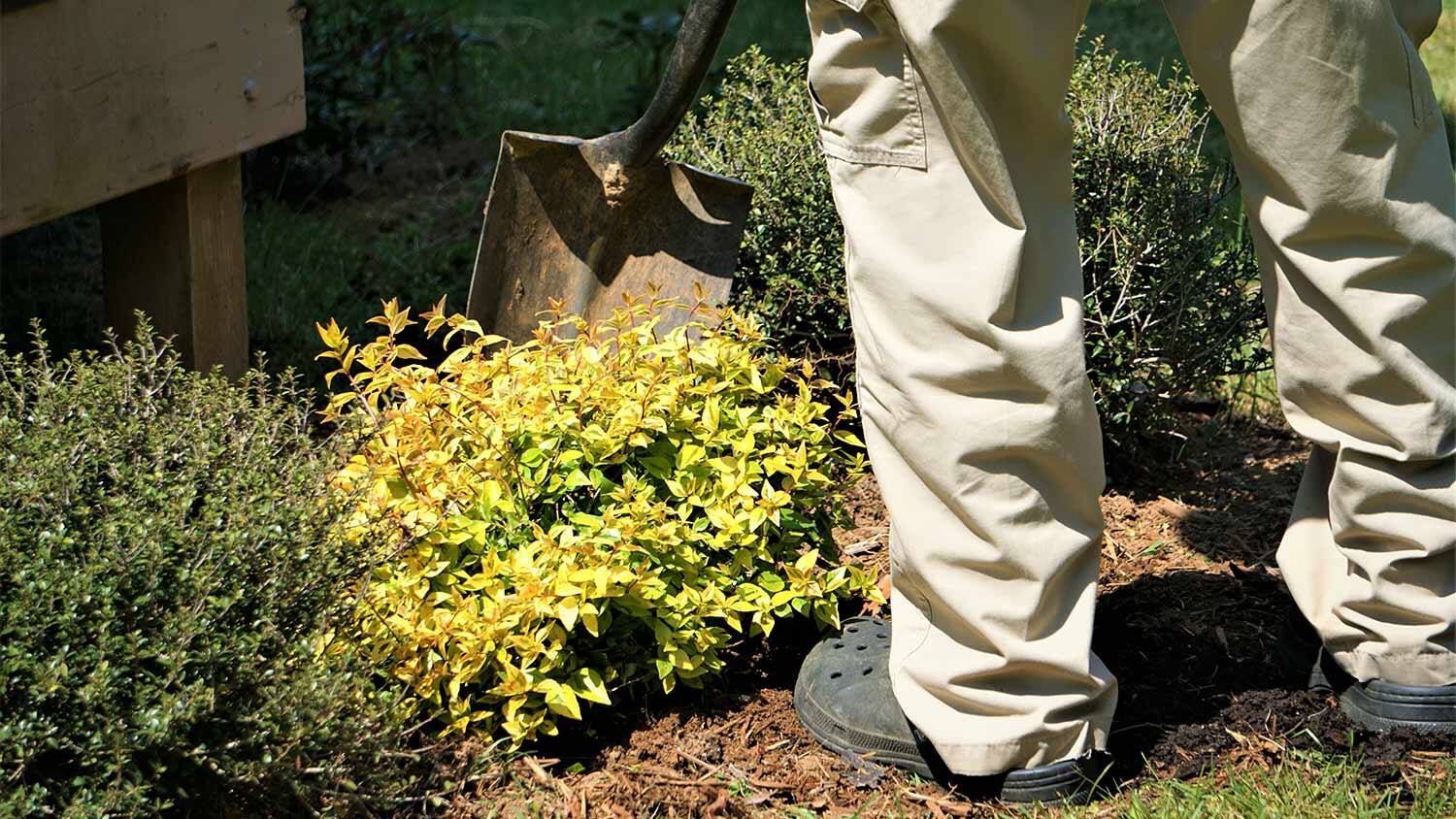Home>Gardening Tips and Tricks>Problem Solving>How To Get Rid Of Banana Trees


Problem Solving
How To Get Rid Of Banana Trees
Published: November 1, 2023
Learn effective ways for problem solving and getting rid of banana trees with our helpful guide.
(Many of the links in this article redirect to a specific reviewed product. Your purchase of these products through affiliate links helps to generate commission for Chicagolandgardening.com, at no extra cost. Learn more)
Table of Contents
Introduction
Welcome to the comprehensive guide on how to get rid of banana trees! Whether you have an unwanted banana tree in your yard or are considering removing one, this article will provide you with all the information you need for a successful removal process.
Banana trees, known for their tropical appeal and delicious fruit, can sometimes become a nuisance or outgrow their designated areas. Their extensive root systems and rapid growth can lead to overcrowding, blocking sunlight, or interfering with other plants in your garden.
In this guide, we will explore the various reasons for removing banana trees, the necessary preparations before removal, and the methods you can use to successfully get rid of them. Additionally, we will discuss how to properly dispose of the removed banana trees and provide tips for maintaining the removal in the long run.
So, if you’re ready to bid farewell to that troublesome banana tree, let’s delve into the process of removing it and regaining control over your outdoor space.
Understanding Banana Trees
Before we dive into the process of removing banana trees, it’s important to have a basic understanding of these fascinating plants. Banana trees belong to the Musa genus, comprising numerous species and cultivars that are widely cultivated for their fruit.
Banana trees are not true trees but rather large herbaceous plants with strong pseudostems. The pseudostem is the trunk-like structure that consists of tightly overlapping leaf sheaths. These plants can grow anywhere from 10 to 30 feet tall, depending on the variety.
One of the key features of banana trees is their rapid growth. Under ideal conditions, they can grow several feet in a year, resulting in lush foliage and abundant fruit production. Their leaves are large and oblong, with a glossy green color.
As for their fruit, bananas typically grow as clusters known as hands and are rich in potassium, fiber, and vitamins. However, it’s important to note that most banana trees grown in residential settings produce ornamental rather than edible fruit.
Banana trees are native to tropical regions and thrive in warm, humid climates. They prefer well-drained soil and require regular watering to keep their roots moist. Additionally, they require ample sunlight to develop properly.
Now that we have a better understanding of banana trees, let’s explore the reasons why you may need to remove them from your property.
Reasons for Removing Banana Trees
While banana trees can add a touch of tropical beauty to your yard, there are several reasons why you may want to consider removing them:
- Overcrowding: Banana trees have a tendency to spread and grow rapidly. If left unchecked, they can overcrowd your garden, shading out other plants and hindering their growth.
- Space limitations: As banana trees can reach impressive heights, they require a significant amount of space. If you have limited yard space or your banana tree has outgrown its designated area, removing it may be necessary.
- Maintenance requirements: Banana trees require regular upkeep, including pruning and fertilizing. If you’re not willing or able to invest the time and effort into maintaining them, removing them can save you future maintenance tasks.
- Root invasion: The extensive root system of banana trees can cause problems by invading underground pipes, foundations, or nearby structures. Removing the tree can prevent potential damage and costly repairs.
- Limited fruit production: While some varieties of banana trees produce edible fruits, others are grown primarily for their ornamental value. If you have a banana tree that produces inedible fruit or doesn’t produce any fruit at all, removing it may be desirable.
- Landscaping changes: If you’re planning to redesign your garden or make significant landscaping changes, removing a banana tree can provide a fresh canvas for your new vision.
Keep in mind that removing a banana tree should be a well-considered decision. If your banana tree is healthy, well-maintained, and adds value to your landscape, there may be no need to remove it.
Now that we’ve explored the reasons for removing banana trees, let’s move on to the preparations you need to make before starting the removal process.
Preparation before Removing Banana Trees
Before you start removing a banana tree from your property, it’s essential to make some necessary preparations. These preparations will ensure a smoother and more efficient removal process:
1. Safety first: As with any outdoor project, safety should be your top priority. Wear appropriate protective gear, such as gloves, safety goggles, and sturdy footwear. Avoid working alone, if possible, and enlist the help of a friend or family member.
2. Check local regulations: Before removing a banana tree, check with your local authorities or homeowners association to ensure there are no regulations or permits required for tree removal. Some areas may have restrictions or guidelines in place.
3. Gather the right tools: Depending on the size of the banana tree, you will need different tools for its removal. Common tools include a shovel, pruning shears, saw, loppers, and a stump grinder if necessary.
4. Choose the right time: It’s best to remove a banana tree during its dormant season, which is typically in late winter or early spring. During this time, the tree is less likely to be actively growing and will be easier to handle.
5. Plan the removal process: Take some time to plan out the removal process. Consider how you will dispose of the tree, whether you will be using professional services, and any potential obstacles or challenges you may encounter.
6. Clear the area: Remove any nearby obstacles or vegetation around the banana tree to provide better access and prevent any damage that could occur during the removal process.
By following these preparation steps, you will be well-equipped and ready to tackle the removal of your banana tree. Next, we’ll discuss different methods you can use to actually remove the tree from your yard.
Methods to Remove Banana Trees
When it comes to removing a banana tree from your yard, there are several methods you can choose from. The choice of method will depend on various factors such as the size of the tree, your physical ability, and the resources at your disposal. Let’s explore three common methods of banana tree removal:
1. Digging Out Banana Trees: This method is most suitable for smaller banana trees. Start by digging a trench around the base of the tree, taking care not to damage the roots of nearby plants. Gradually work your way towards the center, loosening the soil and exposing the root ball. Once the roots are fully exposed, you can use a cutting tool or shovel to sever the roots from the tree. Finally, carefully lift the tree out of the hole, making sure to remove as much of the root system as possible.
2. Cutting Down Banana Trees: If the banana tree is too large to be dug out, you can opt to cut it down instead. Start by removing the lower branches and foliage to make it easier to handle. Use a sturdy saw or chainsaw to make a clean cut about three feet above the ground. Then, gradually work your way up the trunk, cutting it into manageable sections. Take caution to avoid any surrounding structures or plants. Once the tree is cut down, you can remove the remaining stump using a stump grinder or hire professionals for the job.
3. Killing Banana Trees with Chemicals: Another method to consider, especially for large and stubborn banana trees, is using chemical treatments to kill the tree. This method involves applying herbicides or specific tree-killing chemicals to the tree, forcing it to die over time. It’s essential to follow the instructions provided by the manufacturer and take precautions to prevent any harm to yourself, other plants, or the environment. Keep in mind that this method may take several weeks or even months to completely kill the banana tree.
Choose the method that aligns with your abilities and the size of the banana tree you’re removing. Consider seeking professional assistance if you’re unsure or if the tree poses a safety risk. Once the tree is removed, it’s important to dispose of it properly, which we’ll discuss in the next section.
Digging Out Banana Trees
When it comes to removing smaller banana trees, digging them out is a practical method. Here’s a step-by-step guide on how to effectively dig out a banana tree:
1. Assess the tree: Start by evaluating the size and condition of the banana tree. If the tree is too large or has an extensive root system, it may require additional tools or assistance.
2. Prepare the area: Clear the area around the banana tree, removing any obstacles or plants that could impede your digging process.
3. Dig a trench: Begin by digging a trench around the base of the banana tree. The trench should be wide enough to accommodate your shovel and allow you to reach the roots. Be cautious not to damage the roots of nearby plants.
4. Loosen the soil: Once you have dug the initial trench, start loosening the soil around the tree. Use your shovel to gently pry the soil away from the root ball. This will make it easier to extract the tree later on.
5. Expose the roots: Gradually continue digging, working your way towards the center of the tree. As you remove soil, the root system will become more visible. Take care not to damage the roots while digging.
6. Sever the roots: Once the roots are fully exposed, you can use a cutting tool or shovel to sever the roots from the tree. Start with the smaller and more accessible roots first, gradually working towards the thicker and more embedded roots.
7. Lift the tree: With the roots cut, carefully lift the banana tree out of the hole. It may be helpful to ask for assistance if the tree is heavy or difficult to handle. Try to remove as much of the root system as possible to prevent regrowth.
8. Backfill the hole: After removing the tree, backfill the hole with soil and tamp it down gently. Water the area to settle the soil and promote the integration of surrounding plants.
By following these steps, you’ll be able to successfully dig out a smaller banana tree from your yard. Remember to dispose of the tree properly and maintain the removal to prevent regrowth. If you have a larger or more stubborn banana tree, cutting it down may be a more suitable method, which we’ll cover in the next section.
Cutting Down Banana Trees
If you have a larger or more mature banana tree that cannot be easily dug out, cutting it down is a viable method. Here’s a step-by-step guide on how to cut down a banana tree:
1. Prepare the area: Clear the surrounding area of any obstacles, plants, or structures that may be in the way. Ensure that there is enough space for the tree to fall without causing damage.
2. Assess the tree: Evaluate the size and condition of the banana tree. Determine the best angle and direction for it to fall safely. If the tree is near buildings, power lines, or other obstructions, it may be necessary to call in professional help.
3. Remove lower branches: Start by removing the lower branches of the banana tree. Use pruning shears or a saw to cut them off, making it easier to access the trunk and work your way up.
4. Cut the trunk: Using a sturdy saw or chainsaw, make a clean horizontal cut about three feet above the ground. Take caution to avoid any surrounding structures or plants. This will create a stable base for further cutting.
5. Section the trunk: Begin cutting the remaining trunk into manageable sections. Start from the base and work your way up, making vertical cuts. The size of the sections will depend on your physical strength and the equipment you have available.
6. Dispose of the tree: Once the tree is cut down, you need to properly dispose of the sections. If the tree is too large to be moved by hand, you may consider using machinery or hiring professionals to assist with removal.
7. Remove the stump: After the tree has been cut down, you may choose to remove the stump as well. This can be done using a stump grinder or by hiring a professional stump removal service.
8. Fill the hole: If you decide to remove the stump, fill the hole left behind with soil or another suitable material. Compact it firmly to prevent any sinking or settling later on.
Cutting down a banana tree can be a labor-intensive task, so it’s important to take the necessary safety precautions and assess the difficulty level before attempting it. If you’re uncertain or have concerns about safety, consider seeking professional assistance.
In the next section, we’ll explore another method of getting rid of banana trees, which involves using chemicals to kill the tree.
Killing Banana Trees with Chemicals
If you’re dealing with a large or stubborn banana tree that cannot be easily removed by digging or cutting, using chemicals to kill the tree is an alternative method. However, it’s crucial to approach this method with caution and adhere to proper safety guidelines. Here’s a step-by-step guide on killing banana trees with chemicals:
1. Choose the right product: Select a herbicide or specific tree-killing chemical that is suitable for banana trees. Consult with a local gardening expert or read product labels to find an appropriate option.
2. Wear protective gear: Before handling any chemicals, make sure to wear proper protective gear, including gloves, safety goggles, and a mask.
3. Prepare the tree: Trim away any lower branches or foliage from the banana tree to expose the trunk surface. This will provide a better target area for applying the chemical.
4. Apply the chemical: Follow the instructions provided by the manufacturer for the specific chemical you are using. Apply the chemical onto the cut or exposed surfaces of the banana tree, ensuring thorough coverage.
5. Monitor and repeat applications: Monitor the banana tree over time to determine if it is showing signs of decline. Depending on the chemical used, it may take several weeks or even months for the tree to die. If necessary, apply additional applications as instructed by the manufacturer or gardening expert.
6. Dispose of the tree: Once the banana tree is fully dead and dried out, you can proceed to remove and dispose of it. Consider cutting it into smaller sections for easier removal or hire professionals for assistance.
7. Properly handle and store chemicals: Safely dispose of any leftover chemicals as per the manufacturer’s instructions. Keep in mind that improper handling or storage of chemicals can be hazardous to the environment and health, so always follow guidelines.
It’s important to note that using chemicals to kill a tree should be approached carefully, especially if you have nearby plants or water bodies that could be affected. Consider seeking advice from professionals or consulting with local gardening experts to ensure you’re using the most suitable method and product for your specific situation.
In the next section, we’ll discuss how to properly dispose of the banana tree after it has been removed or killed, as well as tips for maintaining the removal in the long run.
Disposing of Banana Trees
Once you have successfully removed or killed a banana tree, it’s important to properly dispose of it to prevent any potential issues. Here are some tips for effectively disposing of banana trees:
1. Composting: If the banana tree is dead, you can consider composting it. Shred or chop the tree into smaller pieces to facilitate the composting process. Avoid using any parts that have been treated with chemicals.
2. Green waste collection: Check with your local waste management facility or municipality to see if they offer green waste collection services. They may have specific guidelines for tree disposal and pick-up schedules.
3. Recycling centers: Some recycling centers may accept woody materials like tree branches. Contact local recycling facilities to inquire about their acceptance policies and if they can accommodate the disposal of your banana tree.
4. Mulching: Consider using the banana tree as mulch for other areas of your garden. Chip or shred the tree into smaller pieces and spread it as a protective layer around plants. This can help with moisture retention and weed suppression.
5. Professional tree removal services: If you’ve hired professional tree removal services, they will typically handle the disposal of the tree. Confirm this with the service provider before the removal process begins.
6. DIY projects: Get creative and repurpose parts of the banana tree for DIY projects, such as making plant supports, trellises, or garden structures. This way, you can give the tree a second life even after its removal.
Proper disposal of the banana tree is essential to maintain a clean and tidy environment. Be sure to follow local regulations and guidelines regarding tree disposal to avoid any potential fines or penalties.
Now that you know how to dispose of the banana tree, let’s explore some tips for maintaining the removal and preventing regrowth in the long run.
Maintaining Banana Tree Removal
Successfully removing a banana tree from your yard is just the first step. To ensure that the removal is long-lasting and prevent any potential regrowth, it’s important to follow these maintenance tips:
1. Remove suckers: Banana trees often produce suckers, which are small shoots that emerge from the base of the tree. These can lead to the regrowth of the banana tree. Regularly inspect the area where the tree was removed and promptly remove any suckers that appear.
2. Monitor regrowth: Keep a close eye on the area where the banana tree was removed for any signs of regrowth. If you notice new shoots or leaves emerging, immediately take action to remove them before they establish themselves.
3. Apply herbicides (if necessary): If regrowth persists or becomes a recurring issue, you may need to use herbicides specifically designed to target banana trees. Follow the instructions provided by the manufacturer and take appropriate safety measures when handling and applying herbicides.
4. Regular maintenance: Maintain a regular garden maintenance routine to prevent any potential banana tree seedlings from establishing themselves in your yard. This includes regular weeding and clearing of plant debris that could provide a favorable environment for banana tree growth.
5. Consider landscape design: If the space previously occupied by the banana tree is prone to regrowth or poses challenges for maintenance, consider modifying the landscape design. Choose alternative plants or landscaping elements that are easier to manage and less likely to become invasive.
6. Seek professional assistance: If you continue to experience difficulties with regrowth or are unsure about the best practices for maintaining the removal, don’t hesitate to seek advice or assistance from professional gardeners or arborists. They can provide expertise and guidance tailored to your specific situation.
By following these maintenance tips, you can effectively prevent the regrowth of banana trees and maintain the removal in the long run. Stay vigilant and proactive in managing the area to ensure a banana tree-free environment.
Now that you have the knowledge and understanding of how to maintain the removal, let’s wrap up this comprehensive guide on getting rid of banana trees.
Conclusion
Removing a banana tree from your yard may seem like a daunting task, but with the right knowledge and approach, it can be a manageable process. Whether you choose to dig out the tree, cut it down, or use chemicals to kill it, the key is to plan carefully, prioritize safety, and follow the proper steps.
Understanding the reasons for removing a banana tree, preparing the area beforehand, and selecting the appropriate removal method are crucial for a successful outcome. Additionally, disposing of the tree responsibly and taking steps to prevent regrowth will help maintain a banana tree-free environment in the long run.
Remember to consider local regulations, seek professional assistance if needed, and wear the appropriate protective gear throughout the removal process. Safety should always be your top priority.
By following the guidance provided in this comprehensive guide, you can confidently say goodbye to unwanted banana trees and regain control over your outdoor space. Enjoy a well-maintained garden without the hassle of dealing with overgrown or invasive banana trees.
Now it’s time to roll up your sleeves and start the process of removing that troublesome banana tree. Good luck!










